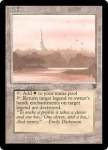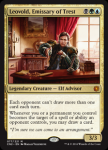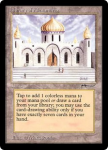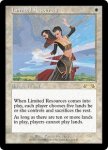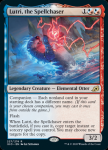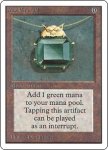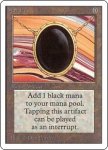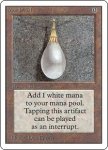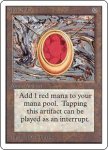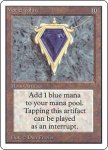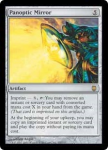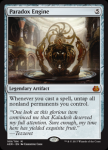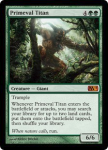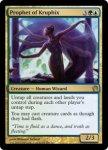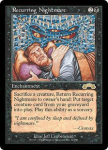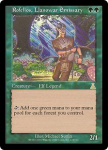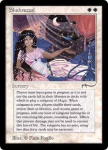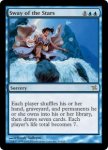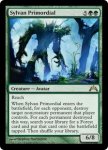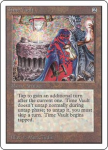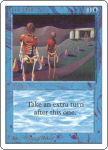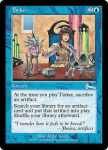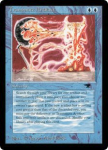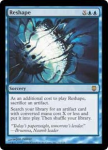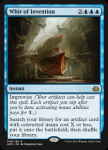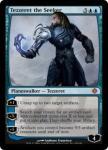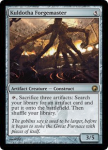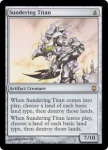
Commander RC said:
First Printed: 2004-FEB
Banned: 2012-JUN
There are many lands that players would love to see leaving the battlefield, but Sundering Titan doesn’t target those. Decks that blink or bounce Sundering Titan can utilize its effect repeatedly, leading to an environment where it’s nearly impossible for opponents to keep basic lands in play. Basic land destruction is a predictably unpopular mechanic, especially in an environment when you don’t know the people you’re playing against.
This blurb irritated me enough that I actually used the Wayback Machine to find Sheldon Menery's original statement from when the card was banned. Turns out that it didn't help. But I'm getting ahead of myself.
I have a too-vague, yet very firm recollection of discussion around Sundering Titan specifically regarding its effect on dual lands. The card was banned back in 2012, when the percentage of EDH decks using Revised dual lands was much higher than it is now. Also, the Ravnica Block shocklands were reasonably popular at the time, and those were a factor too. Sundering Titan is OK against basic lands, but far stronger against decks filled with dual lands. Because Sundering Titan is no longer really popular in any format, this aspect of the card might be somewhat forgotten. If you're playing a mono-green deck, for instance, then I can only hit one of your forests when Sundering Titan enters and another one when it leaves. Use that with Goblin Welder or whatever and you're picking off lands at a reasonable pace, but things get awkward quickly. You have to choose a land of each basic land type, so how well this works depends on the distribution of basic land types in your pod. Hobble one player and you're not stopping the other two. Distribute the land destruction equally and you're about to face a beatdown from all three opponents. If you're against too many of the same basic lands, you might have to choose your own lands. And if an opponent just isn't relying on basics at all, then you might have no recourse. But in a format where duals/shocks were so prolific, and where most decks were three colors anyway, you could usually spread the Sundering Titan picks across five different lands all controlled by your opponents and quickly cut them off access to some of their colors. This wasn't insurmountable, but it rankled a lot of players back then.
Now I'd thought for sure that there'd been some sort of discussion involving one or more RC members regarding this whole Sundering Titan conundrum with dual lands. None of this shows up in the new official blurb, and I was annoyed at the current RC for failing to properly account for the
true reason that Sundering Titan was banned. However, when I went back and read Sheldon Menery's original post, all I got was this...
Sheldon Menery said:
Sundering Titan has long been a card on the edge. The decision to get rid of it came from the combination of two points. One, it simply created undesirable game states. It was too easily both intentionally abused and unintentionally game-warping, especially since its ability triggers on both entering and leaving the battlefield. Two, there has been a fair amount of community distaste for the card, and we agreed that the card overwhelmingly creates a negative experience for players. Listening to the ever-growing and ever more-involved community is important to us.
That's just as vague as the new blurb! While I still believe that I'm right about the history here, I have no idea where to begin a search for what I'm talking about, and I'm not sufficiently motivated to dig through archives of these old forum posts. However, since I'm not putting in that work, I have to also admit the possibility that I'm just
wrong about this. Perhaps discussions of Sundering Titan really were only focused on its role in doing vaguely bad things, and not specifically dealing with how it interacts with dual lands. I doubt it, but I don't know for sure. And that's infuriating. Frankly, I know I can't trust my own memory of this because EDH was not a format I followed closely back in 2012. But on this, I trust the RC even less, as I've caught the explanations misstating the historical reasons for bans multiple times already.
All that just to whine about a particular discrepency between my own understanding of this card and the one presented in the blurb. I know, I know. Sorry. But that's why this irritates me. Anyway, as far as the blurb itself goes, I think it makes a poor case for banning Sundering Titan. If I can deploy and recur an 8-drop creature of my choice multiple times, I should be able to do something really powerful. Sundering Titan as a land destruction engine is unreliable because the mode is the same every time: choose a land of each basic type, then destroy those lands. That could be up to five lands, but you're always constrained on which five those can be, so unless you're eschewing lands with basic types entirely in your own deck, you might have to hit your own lands. You might have an opponent who does the same, or you might only ever be hitting one land at a time belonging to the player at the table who is your biggest threat. So this is a powerful card, but it's highly situational. Even in an ideal metagame, one where your opponents are all using decks loaded with duals/shocks, the card is still very situational. I'd go so far as to say that if you're not utilizing the 7/10 body effectively or employing some sort of combo where Sundering Titan is a good fit (such as using cards that can give opponents' lands different basic types of your choice), it probably just wouldn't even be worth it to run Sundering Titan.
One more thing about the official blurb. I don't buy the whole appeal to the idea that basic lands are sacred. In this format, I have tons of other (sometimes better) ways to blow up basic lands. The only land destruction cards on the ban list are Balance (a broken card that does far more than get rid of lands), Limited Resources (an obvious issue for reasons we've already covered in this thread), and Sundering Titan. Don't lose sight of the fact that this means I can use Armageddon, Strip Mine, Impending Disaster, Death Cloud, Ice Storm, Cataclysm, Acid Rain, Land Equilibrium, etc. The only thing unique about Sundering Titan is that it's banned and those other cards are not.
I can't really speak to the "community distaste" from back in 2012. I strongly suspect that some perfectly legal cards in this format have seen far more community outcry than Sundering Titan did back then, and the issue, as with so many of these banned cards, was timing. Sundering Titan was the subject of complaints in an era when the RC were more actively motivated to curate the format and also when the community was smaller and a vocal minority could more easily prop up some non-issue. These days, the format is huge compared to back then, we have EDHrec showing us the actual popularity and use of cards, we have more event reporting and decentralized discussion, and the RC themselves are exceedingly aloof. If Sundering Titan were a new card being printed for the first time in 2024, it would generate less buzz than stuff like Farewell, Dockside Extortionist, and Void Winnower.
Easy unban.
